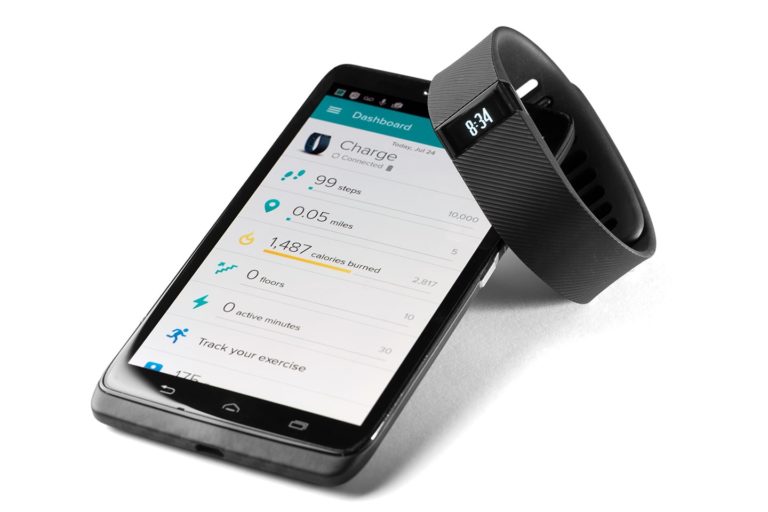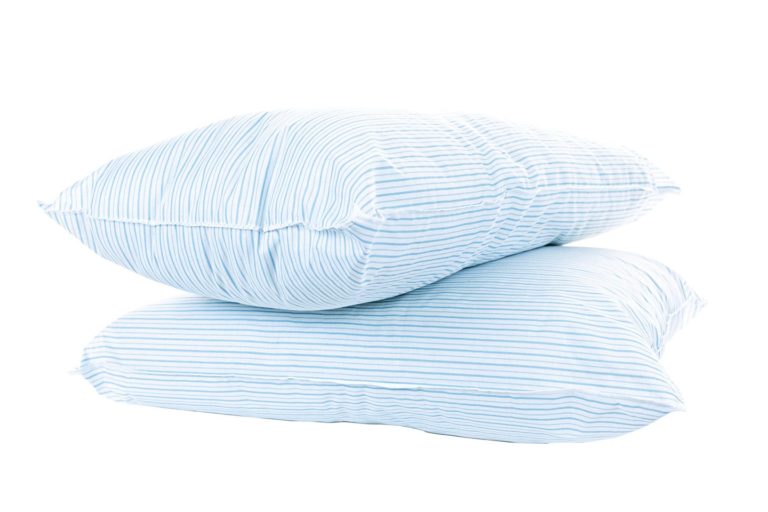For Her
5 Ways to Boost Energy
Feeling drained? Increase your energy levels with these tips:
1. Drink more water.
Staying hydrated will enhance your performance, so try to refill your water glass every few hours (or enough that you don’t feel thirsty). And, limit your alcohol consumption, which dehydrates the body and can make you feel more tired.
2. Get physical.
Although it seems counterintuitive, participating in regular exercise works to decrease tiredness. Even just a 10-minute walk around the block can do wonders to boost your spirits!

3. Nosh on nuts.
Reach for a handful of peanuts or almonds for a quick pick-me-up. High in magnesium, the nutrients in nuts are essential for energy.
4. Meet up with a friend.
Social isolation is known to contribute to tiredness, but an upbeat friend can instantly turn your day around. Get out of the house and meet for coffee, or better yet, a spin class at the gym.
5. Take a power nap.
That’s right! Daytime napping can combat fatigue while increasing motor performance, as long as your power nap is 20 minutes or less.
Restaurant Restraint
Going out to a restaurant can quickly derail any healthy eating goals: Think massive portion sizes, fatty sauces, and fried appetizers for the table. But with a plan in place and a little restraint, you can stay on track and enjoy a delicious meal!
Do some sleuthing.
Avoid impulsive ordering by checking out the restaurant’s menu online before you arrive. You can even do research to help you choose the healthiest option.
Find key words.
Words like fried, creamy, and breaded are giveaways that the dish is more indulgent. Stick to grilled, steamed, roasted, and baked for the healthiest picks.
Request more veggies.
If your meal comes with sides, opt for vegetables like a side salad, beans, vinegar-based slaw, or steamed broccoli. Or, ask about substituting veggies for another part of your meal.
Box it up.
Restaurants are notorious for plating double (or triple) the portion size you actually need. Ask your server to bring a to-go box when your meal arrives; that way, the extra portion is out of sight, out of mind. And, you’ll get to enjoy leftovers the next day.
For Him
Work, Recover, Repeat
How can you reach peak levels of performance in your fitness routine? And no, it’s not by completing sweat-inducing, fast-and-furious workouts at the gym seven days a week. Instead, you can maximize your training with active recovery, or low-impact activity, interspersed throughout the week.
The fact that your body needs rest between intense exercise sessions is no secret, but that doesn’t mean you have to spend your rest days on the couch. That’s where active recovery comes in. By incorporating this practice, you’re giving your body a break without being sedentary. And your body benefits – active recovery increases your blood flow, reduces soreness, and loosens up tight muscles.


So what counts as active recovery? To start, you can perform similar activities to your current routine, but with much less intensity. If you run 10 miles one day, you might jog or walk at a brisk pace the next. Or if you’re working on deadlifts or squats, repeat those moves the next day – just decrease the number of reps. Additionally, swimming laps, yoga, cycling, hiking, and self-myofascial release (like foam rolling) are all types of active recovery that can produce real benefits
Making Sense of Moles
Moles are very common, especially among people with light skin – you may be born with them, or you may acquire moles over your lifetime. In fact, a fair-skinned person could have as many as 40 moles by adulthood. While most moles are harmless, some can indicate the development of melanoma or another type of skin cancer.
If you’re wondering if you should get a particular mole checked out by your doctor, the American Cancer Society recommends using the ABCDE rule as a guide. The following factors are possible signs that melanoma is present:
Asymmetry
The mole doesn’t have two matching halves.
Border
The mole’s edges are irregular, ragged, notched, or blurred.
Color
The mole isn’t the same color all over and may include different shades of brown or black.
Diameter
The mole is larger than six millimeters (about 1/4 inch) across.
Evolving
The mole changes in size, shape, or color.
It’s important to note that some melanomas do not fit within these guidelines. When it comes to talking with your doctor, it’s always best to be safe rather than sorry.
For Moms
Signs of Swimmer’s Ear
Splashing around in the pool is all fun and games … until your child gets swimmer’s ear. However, identifying this infection early and seeking treatment will have your loved one back in the pool in no time!
First, it’s important to note that swimming isn’t always the cause of swimmer’s ear. The infection can occur anytime water is trapped in the ear canal, resulting in bacterial growth. Scratching or cleaning the ear canal can also contribute to swimmer’s ear, and those with excessive ear wax or a chronic skin condition, like eczema, are more prone to infection.


Signs to watch for include itching, redness, and pain when touching the ear or moving the jaw. If your child displays any of these symptoms, it’s best to contact their doctor immediately. Without treatment, symptoms worsen and can also include drainage or discharge, fever, and hearing problems. With treatment, such as prescription eardrops, symptoms will usually subside within a few days.
To prevent future cases of swimmer’s ear, dry your child’s ears thoroughly after swimming or bathing. Ear plugs may be used when swimming, and preventive eardrops can be made at home with a mixture of white vinegar and rubbing alcohol.
Bye-Bye, Baby [Teeth]
Young children eagerly anticipate the tooth fairy’s first visit. As a parent, here’s what you can expect during your child’s transition from baby (primary) teeth to permanent teeth.
Most children notice their first loose tooth between ages 5 and 7.
But, it’s not uncommon for children as young as 4 and as old as 8. Often, children whose baby teeth came in early will lose them first.
The bottom two front teeth will usually go first.
And the top two front teeth will come next. Your child’s last baby teeth – typically the molars – will likely fall out around age 12.
Once a tooth becomes loose, it can take a few months to fall out.
Most of the time, teeth fall out on their own. If a tooth is being particularly stubborn, it’s fine for your child to try to wiggle it out – they just shouldn’t force it.
As permanent teeth come in, it’s important to reinforce the importance of dental care with your child. Have them brush their teeth twice a day and floss daily, and encourage healthy food choices with limited added sugars.
For New Moms
How to Sleep Like a Baby During Pregnancy
When you’re pregnant, a good night’s sleep can seem like an unachievable dream, especially in those final months before delivery. Following these tips can help:
- Try sleeping on your side, specifically your left side, which improves circulation and eases pressure on your uterus. Additionally, bending your knees can help take pressure off your back. After 20 weeks of pregnancy, you should avoid lying on your back altogether.
- Stock your bed with pillows for extra support. You might find it comfortable to place a pillow between your legs or behind your back. Keeping a thin pillow under your belly will help support the additional weight.
- Aim for 30 minutes of physical activity, like walking, every single day for better sleep. Any rigorous exercise should be reserved for earlier in the day – before bedtime, opt for more relaxing activities, like yoga or deep-breathing.


- Drink lots of liquids throughout the day but cut yourself off about two to three hours before hitting the sack. Also avoid caffeinated beverages, like soda and coffee, to cut down on bathroom trips in the night.
The Bath Time Basics
As a new parent, navigating your newborn’s first bath can be intimidating. Help maintain a tear-free zone for everyone (yourself included) with these guidelines!
Start with the sponge.
You can stick to sponge baths until your baby’s umbilical cord falls off, which takes a week or two. You’ll need a flat surface, a soft towel for your baby to lie on, and a basin to hold the warm – never hot – water.
Assemble your supplies.
Once your baby graduates to a bath, you can use a plastic tub or a sink lined with a clean towel. Bath time essentials include a cotton washcloth, baby soap, soft towel, and clean diaper.
Stay warm.
Babies lose their body heat quickly. To keep your baby comfortable, bathe them in about two inches of warm water, and make sure the room is warm enough (around 75 degrees).
Create a routine.
As long as you’re cleaning them after every soiled diaper, your baby only needs a bath two to three times a week – more frequent bathing can dry out their soft skin. Find the time of day that works best for you and your baby, whether in the morning or right before bedtime.
For The Whole Family
Reducing Food Waste 101
How much food do you toss out at the end of every week? What about each day? According to the United States Department of Agriculture, American consumers waste approximately one pound of food every single day. Save money and the earth’s resources by reducing your food waste – here’s how:
Planning
Create a weekly meal plan for your household. You should consider your family’s preferences, meals you’ll be eating out, and ingredients you already have when making your plan. Then, only buy as much food as you need and will use.


Storing
Learn how to properly store fruits and vegetables for maximum freshness, which will help them last longer. If you have excess produce, you can freeze, can, or preserve it for later use.
Preparing
Chop up your produce for the week, making it more accessible for meals and snacks. Freeze bread or meat that you won’t be able to use by the expiration date. You can also freeze leftovers, like soups and casseroles, to buy yourself some time.
Tip: Try using the edible parts of food that you normally don’t eat! Stale bread can be turned into croutons, chicken bones can be transformed into broth, and broccoli stems can be added to salads and stir-fries.
Mind the Mosquitoes
When it comes to backyard barbecues and nature hikes, mosquitoes are public enemy number one. Beyond the nuisance, these pests are known to carry serious diseases like dengue, chikungunya, and West Nile. Take the proactive approach this mosquito season to protect yourself and your family.
Purchase insect repellant.
One of the easiest ways to prevent mosquito bites is using insect repellant. In addition to products with DEET, natural bug repellants containing oil of lemon eucalyptus are effective at deterring mosquitoes.
Dress for the occasion.
Mosquitoes are attracted to darker colors, so opt for lightly colored attire when spending time outside. It’s also smart to wear long sleeves and pants that cover the skin, especially during dusk and dawn (when mosquitoes are most active).
Prepare your home.
Mosquitoes can breed in a half-inch of water, so eliminate any standing water around your home; bird baths, kiddie pools, and rain gutters are some of the most common offenders. Also, keep your doors and windows closed to reduce exposure, and rely on air-conditioning for cooling your home.
For Your Financial Health
The 5 Insurance Policies You Should Own
From flight insurance to life insurance for kids, there are a number of unnecessary insurance policies on the market. Here, we’re covering the most basic, essential policies that will see you through life’s major setbacks.
1. Homeowner’s Insurance/Renter’s Insurance
Unforeseen events like natural disasters and burglaries can be devastating – and costly – without this policy.
2. Health Insurance
Did you know that unpaid medical bills are the leading cause of bankruptcy? Health insurance protects you and your family from unexpected, sometimes hefty, medical expenses.
3. Car Insurance


While the state of Tennessee requires all drivers to take out a liability car insurance policy, collision and comprehensive coverage aren’t required – but they’re beneficial.
4. Disability Insurance
This policy will replace your income in the event of injury on the job. If you aren’t sure, ask your employer about disability insurance and the coverage your company provides.
5. Life Insurance
Whether you opt for term life insurance or permanent life insurance, make sure you have something in place to help your loved ones financially when you’re gone.
Best Budgeting Apps for Your Buck
Budgeting your expenses is easier than ever in 2019, all thanks to a handful of smartphone applications. Each with its own set of tools, the following apps can help you track your spending, pay off debt, save money, and more!
Mint
Often referred to as the grandfather of budgeting apps, Mint has been helping users manage their money since 2006. Offering investment and bill tracking, budget creation, alerts and advice, and a free credit score, Mint gives you a clear overview of your overall financial health.
Cost: Free
YNAB (You Need a Budget)
YNAB’s four core rules, from
“budget every dollar” to “age your money,” provide the guidelines you need to make smart financial decisions. App features include bank syncing, goal tracking, and progress reports, plus access to the YNAB support team.
Cost: $6.99/month
EveryDollar
From financial guru Dave Ramsey, this
budget tool gives every dollar a job, so you’ll know exactly where your money is going. The user-friendly app breaks down your budget into eight spending categories, and you can assess your progress via Ramsey’s “Baby Steps” to financial freedom.
Cost: Free / EveryDollar Plus $99/year

